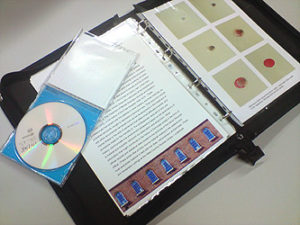There are some very important things that aspiring artists should know before they try and make it as a professional.
Just because you have the creative ability to mold perception and shape moods using color, light, and sound, doesn’t mean you have what it takes to make it as an artist.
In fact, being creative and being talented is rarely very lucrative. Being a professional artist is as much about tenacity as it is about talent.
It takes a lot of concentrated energy, impressive levels of ability and commitment, and a combination of luck, timing, and business savvy to succeed as an artist. It’s definitely not easy, but neither is it impossible — especially if you know what to expect when you are first starting your career.
#1 Give Yourself a Hot Brand
Marketing is important, especially in a crowded field like art. There are millions of people that claim to be artists; they all have portfolios and big aspirations. What they don’t all have is a clear brand. Evaluate your skills, evaluate your specialty, and make a branding decision.
- Are you a photographer? Great. What kind? Editorial, travel, wedding, fashion, food? Focus your brand. (As a photographer we shouldn’t even have to tell you this.!)
- Focus your skills through the right lens and get the best shot at success.
- Once you know what your brand is, use it. Promote it, build it, strengthen it, network with it, attend conventions with it, SEO it.
- Make your brand unique, compelling with impact by focusing on a skill and cultivating it. You’ll increase relevancy, opportunity, and ultimately brand value.
#2 Illustrate Your Point
No matter what kind of artist you are, it pays to be able to do a quick sketch to visually articulate your point. Think of it as professional Pictionary. If somebody asks you for an example of a concept or a campaign and hands you a piece of paper and a pen, you should be able to take that notepad and draw your idea with confidence. Not an illustrator? It doesn’t matter. Even if you’re a computer animator, a fashion designer, or a sculptor, having a basic ability to make quick visual illustrations of your ideas will give you the credibility and edge you need in presentations. Anyone can give an “elevator pitch”, but only a few can describe that pitch with a pen as fluently as they can with a paragraph.
#3 Freelance Regularly
Sure, you’d prefer to have one steady, high-paying job as an animator, illustrator, or designer. Who wouldn’t? It’d be great to receive bimonthly paychecks from your company, have health insurance and paid vacation days. Unfortunately, there are a lot more people like you vying for that steady job than there are jobs like that available.
Instead of waiting around for the perfect opportunity to fall out of the sky, you need to create your own opportunities. How do you do this?
- Simple. Freelance as much as you can. Expand your body of work and your network of professional relationships.
- Work with start-ups, do little one-off corporate projects, take month-long contract gigs. You never know which of the many pots on the fire is going to boil first.
- If you’ve gotten your work exposed to a lot of people, you’ll have much better odds of getting hired when one of these projects takes off. After all, you’ll already be a known and respected commodity.
#4 Volunteer: Serve Others While Serving Yourself
Sometimes we do freelance work for free: it’s called volunteering. Sure, you can look at it as working for free… or, you can look at it as networking.
Try thinking about it like this:
- If you are a talented artist and you aren’t getting paid for that talent, one of the reasons may be lack of exposure.
- It’s as simple as that — not enough people have seen your work! By volunteering, you get to look like a benevolent human being AND you get to showcase your skills to a potentially large and appreciative audience.
- You never know when one of the many people associated with your volunteer project will offer you a job — or an introduction — that can help out your career.
#5 Show Off Your Professional Portfolio Online and Off
Every serious artist needs a serious portfolio. If you want people to consider you a professional, you will need to compile and design a professional portfolio both on the web and in a traditional “book.”
Your book should be in a nice presentation case. Remember, the feel and texture of the case itself as well as the sheen on the sleeves that hold your work will all be evaluated (even if unconsciously) by the people to whom you present your work.
- Online, your portfolio needs to be professionally designed by a web designer; it should be clearly organized and easy to navigate.
- An artist with a badly designed online portfolio will not look professional, no matter how good his or her work is.
- Make sure to link to your experience and education in a resume section, showcase your clients and expertise.
- If you work in various media, you should have a painting channel, an illustration channel, a photography channel, each segmented to highlight your top work in each section.
*****
Please be sure and check out these other helpful articles:
Brand Yourself as an Artist on Twitter
How to “Jump-Start” Your Art Career!
When Are You Ready to Call Yourself a Professional Artist?
Do Artists Need Commercial Gallery Representation?
Tips for Selling Art on Facebook: A Success Story
Use the Hidden Meaning of Color to Improve Paintings
Learn the Two Biggest Mistakes Artists Make with Social Media
One Simple and Effective Way to Show the World You are a Pro
5 Small Business Mistakes To Avoid











Hi Lori,
as always great advice! looking forward to reading the second part 🙂
Franziska San Pedro
@FlavorDesigns
Hello Franziska-
Thank you. I just posted the second part and hope you like it…let me know what you think.
Best-
Lori
Thanks Lori – your blog really is a MUST READ for artists!
Hi Kerry,
Thanks for stopping by and commenting. I really do appreciate it!
Cheers-
Lori
Thank you Lori….
Loved the Idea of Illustrating, Volunteering and portfolio…
Hello Sandhya-
I really enjoyed all this information too! Glad you are finding it inspiring.
Lori 🙂
Hi Lori,
Very well written post with interesting take aways for small companies as well on how to stand out with a compelling brand. – Juan.
Thank you Juan. I am glad you like this post. It is important for artists and other creatives to think of themselves as small business owners in order to help to build their brand.
Cheers-
Lori
Lori McNee,
I have taught computer art and. Animation for 26 years and will be sharing your site with students prior to helping them design portfolios and websites. This is a caring, honest and contemporary site which will inspire a new generation of artists. Thank you very much.
Hello Lucilla, what a wonderful comment you left me! Thank you so much. I do my best to pass on helpful information and I am glad you like what I am sharing. Hope to see you again here. 🙂